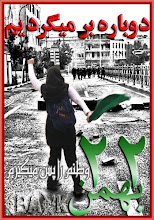Introduction
The CLN, not alas, the Craft Liberation Network, but the Craft Leadership Network, is a motley group of curators, ‘brokers’ and sundry other farmyard animals. They met in Liverpool, midst much quacking and gabble, to develop their ‘leadership skills.’ I went to watch and to try and work out who they wanted to lead. We, the audience and participants, comprised a handful of makers, a sprinkling of academics, a veritable conspiracy of Arts Council dudes (ACE dudes) – place was bristling with them – and three journalists, Emma Crichton-Miller, Teleri Lloyd-Jones and me, assuming I swap my maker’s hat for my journalists notebook. The event wasn’t publicised, it was ‘networked’. We were all there because someone had contacted us.
The Spirit of Agincourt
We began with a keynote speech - Phyllida Hancock, former stage actress, delivered a rousing performance analysing Henry V’s leadership qualities as an exemplar which might be adapted to our campaigns to invade and re-annexe Planet Craft. (Yes, you did read that right. I know it all sounds a bit surreal, but I’m not making this up.) So, with our hearts bursting with the spirit of Agincourt, we sallied forth to three separate encampments to plot our first steps towards the sunlit uplands. My camp plotted a ‘journey’, Hero’s journey, with the curators, ‘brokers’ and ACE dudes as the heros.
Round the Camp Fire
Both rousing speech and subsequent encampment followed standard business development / personal development models, but the most interesting thing with all these gatherings were the conversations and arguments that sprang from the process.
“Banish Craft!” quoth Peter Ting.
“OH no you don’t!” parried the excellent Mr. Beighton from MIMA – vigorous nodding from surrounding camp and me.
“Enough of hierarchies” announced Fareda Khan from Shisha, with an impressive flourish.
“Here Here” I growled in response, believing for a second that I was in the House of Lords. Shisha, btw, is an excellent organisation based in Manchester supporting artists of South Asian origin.
“More dirty spaces” demanded someone, “Hurrah!” we all chorused.
The other encampments were the 60/40 group, and a manifesto group. I’m rounding up spies to get comment on these.
As the spirit of Agincourt slowly evaporated and the farmyard animals returned, we assembled for another quacking speech (sorry) from an architect which in turn led into the panel discussion. The main things I recall from this was Lisbeth den Besten’s plea to makers to get out of the studio and the gallery and to show and be in many other places, and Dr. Ananya Jahanara Kabir, calling for more willingness to acknowledge craft’s spiritual dimension. The discussion that followed prompted Bob-ACE-dude to declare that upon his word, all the applications he’d ever seen from crafts people were stupefyingly dull. They might have been of course, who knows? But I told him he was mixing in the wrong circles. I’ll take him out for a beer some time.
The Verdict
The C Word had a swell time and departed with courage high and heart aglow. The C Word’s inner Governess offers a cooler appraisal. It was a very fine thing to find such a gathering of curators and agents/middle-people/brokers meeting and recognising that there’s a BIG problem with mediating craft and that they're planning a craft resurgence. I also know now that they are attempting to lead their own organisations rather than makers. So you can relax - but not too much.
Who or what are these agents/ brokers/ middle-people exactly?
They are organisations which curate exhibitions and events and take them to galleries or other venues. At best, they can and do create opportunities where artists don’t - for lack of time as much as anything; at worst, they’re another layer of bureaucracy. The real problems occur if they are not sufficiently well informed of current debates among practitioners to be able to represent our work effectively. In this case they’re representing their own desires concerning the direction of craft practices, rather than that of the makers and are more likely to close doors than open them. Up to a point, they will have their own ideas about what craft should be, and for that reason alone, it is imperative that dialogue between makers and middlers exists, is encouraged and is developed, precisely so that they don’t become another set of obstructions. I admit I slightly resent the extra work it takes to keep yet more people informed, but that said, it’s probably an inevitable evil. The Arts Council, for example, is one such organisation. Any funding body is. The bigger headache is if galleries and funders start to rely on middlers more than on makers, simply because they ‘speak the same language’.
The Future
CLN needs to bring in a good collection of articulate makers, or even organise seminars for themselves with groups of makers, so they can get up to speed on what’s actually going on rather than what they imagine is going on. Some are well informed but, at the moment, they are a very small minority. Even new galleries are following the pot-on-a-plinth, lets jam in as much stuff as we can, upmarket junk shop approach, which is depressing. The C Word applauds the aims but wishes to encourage sustained effort in filling in the knowledge gap.
Subscribe to:
Post Comments (Atom)












































No comments:
Post a Comment